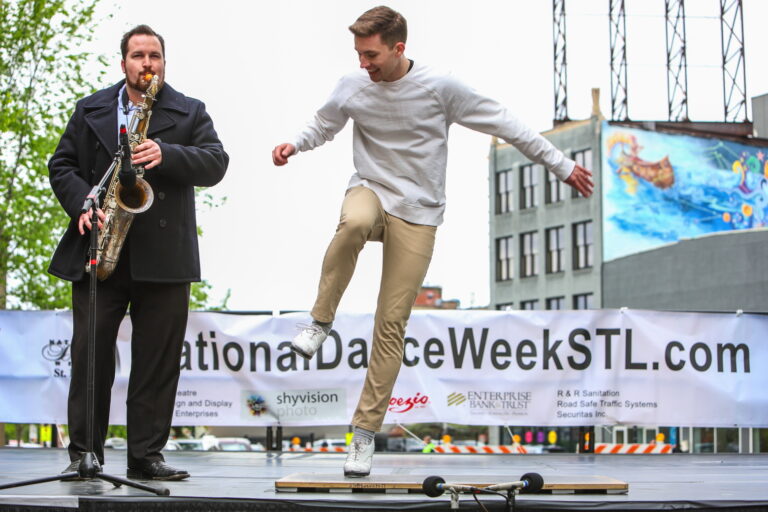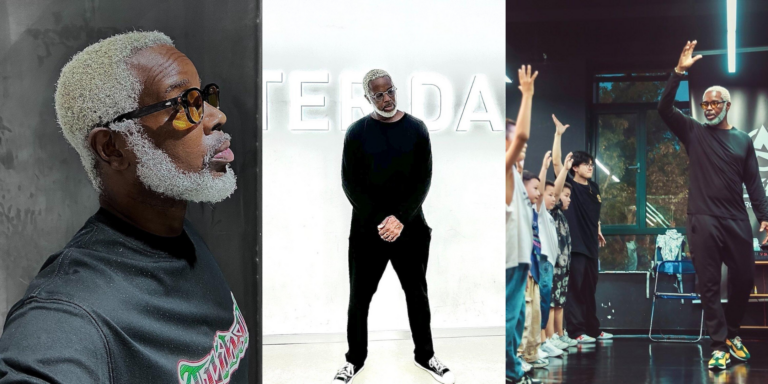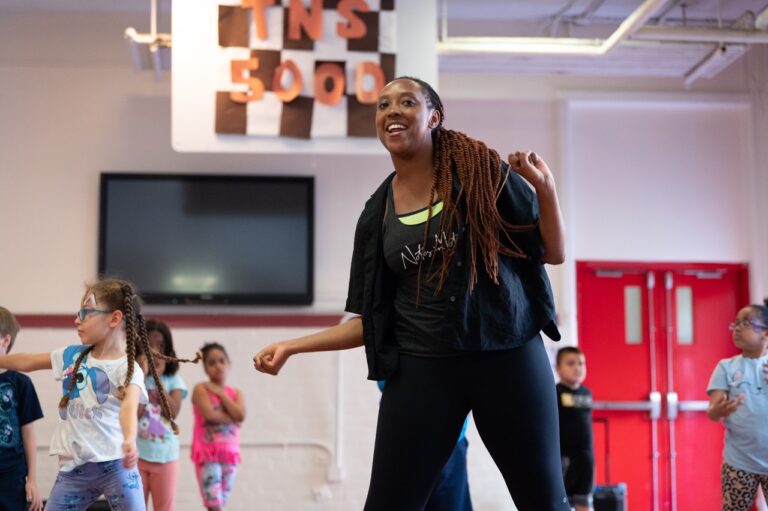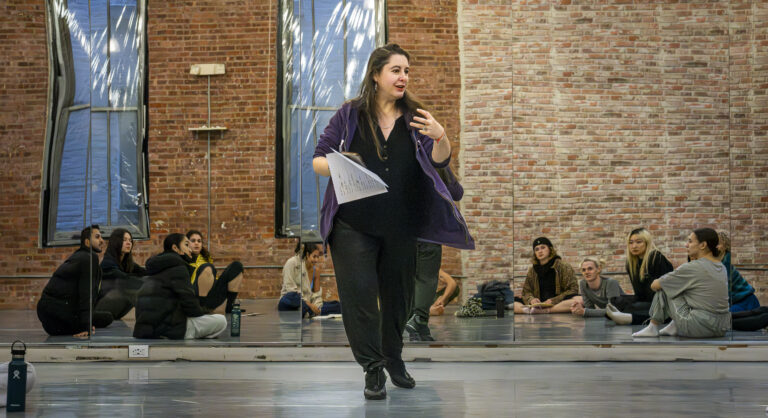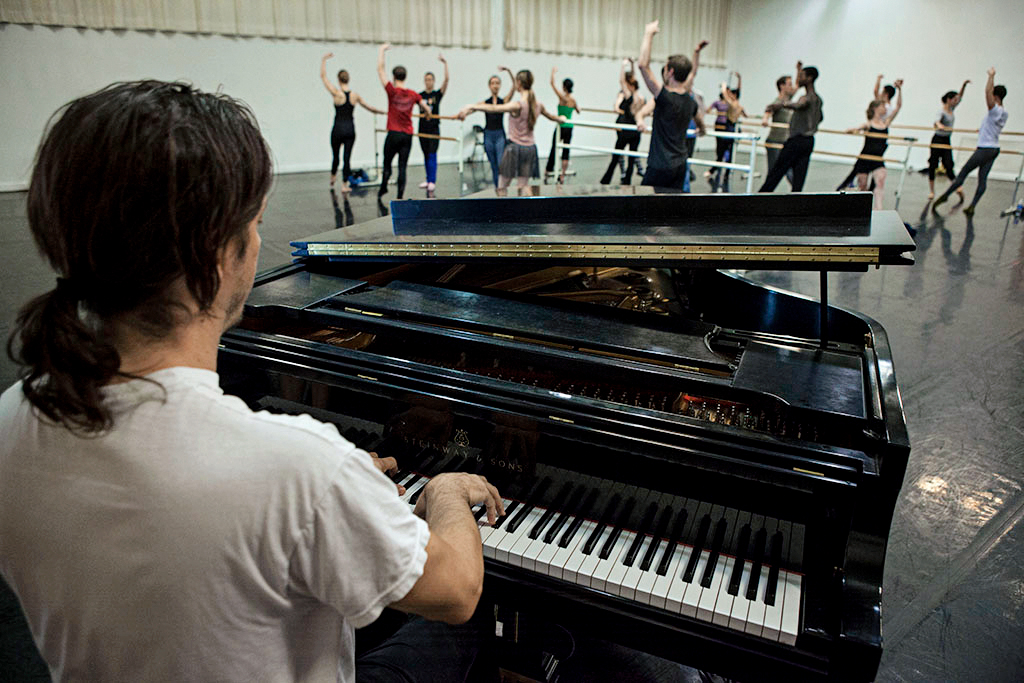
Jerome Korman isn’t surprised that live accompaniment is rare in dance classrooms. After all, “Recorded music is cheaper,” says National Dance Institute’s music director. “Yet, in another way, it’s more expensive.”
That’s because the presence of a live musician adds so much value to a dance class: another artist in the room, a sense of improvisational spontaneity, added opportunities for musical education, a near-infinite choice of musical selections.…Shall we go on?
But it can take work to develop a strong relationship with your accompanist and reach the point where live music flows effortlessly through your studio. To make that journey a little less awkward and frustrating on both sides, Dance Teacher spoke to four experienced dance accompanists to find out what that person behind the piano is really thinking.
Accompanists Are Humans, Not Playlists
To enjoy a great working relationship with your accompanist, start with common courtesy. “Building rapport with the musician starts the minute both people are in the room,” says Robert Boston, the dance music director for Barnard College and co-founder of the Mark Morris Dance Accompaniment Training Program. “At least say ‘Hello’ between greeting students, setting up barres and going through your notes.”
If time allows, it’d also help everyone to, as Korman says, “find out what this person’s sweet spot is.” Ask about the musician’s background (Pop or rock? Classical? Non-Western forms?), so you can play to their strengths instead of spending the whole class outside their musical comfort zone. In turn, give the accompanist a heads-up about how you work and how they can expect the class to unfold.
Recognizing your accompanist’s humanity also means accepting that this will feel far more unpredictable than teaching class to a familiar album. Try to take miscommunications in stride and remain open to happy accidents. “We’re demonstrating to the students what collaboration between two artists looks like,” says Yakir Ben-Hur, associate music director for National Dance Institute.
It goes without saying that you should always thank the accompanist for their contributions at the end of class—and it never hurts to tell them when they play something that really touches you or works particularly well for the dancers.
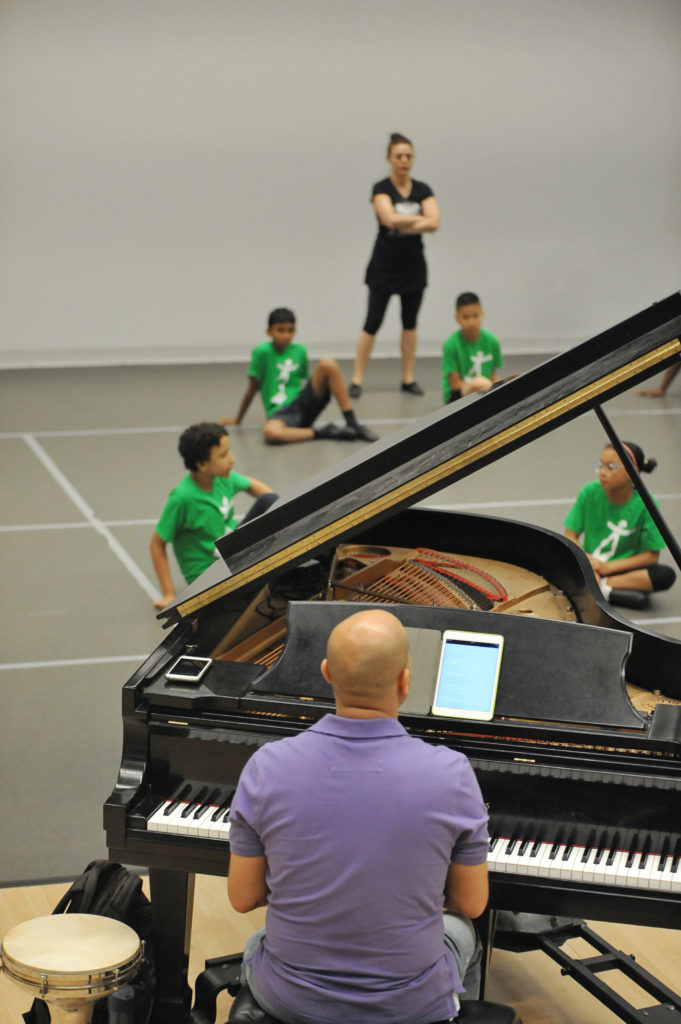
Don’t Worry About Music Theory
Never learned the difference between diatonic and Mixolydian mode? All four musicians agree that’s no big deal. As Michael Wall—composer/multi-instrumentalist and educator—says, “Dancers have much more of an embodied understanding of music than they might think, such that dance teachers are coming into the room with many tools to explain what music they need.” Too much music-theory terminology might actually be to everyone’s detriment, Boston says, since certain terms—“accent” and “adagio” among them—actually mean slightly different things to musicians.
You’ll get through the class just fine by musicalizing your body and voice. Ben-Hur recalls late NDI founder Jacques d’Amboise belting out made-up melodies to give musicians a jumping-off point. (If you feel self-conscious about singing in front of others, don’t: Boston and Wall both say they’ve heard the whole spectrum of vocal ability, and promise they’re not judging you.) You also can and should speak the exercise at tempo, with dynamic inflection in your body and voice. Comparisons are yet another tool, Korman notes: “You can be like, ‘Hey, I was practicing this at home to Earth, Wind & Fire’ or ‘Could you play something like a waltz by Strauss?’”
Use Your Voice, Not Your Hands
Generally, it’s better to announce “A little faster, please” or “This is the last eight-count,” rather than to try to convey what you want with your hands, as Ben-Hur says that hand gestures can be ambiguous or easy to miss across a studio. Snapping and clapping, on the other hand, can be downright annoying. “Trying to change the tempo that way feels a little mean,” Boston says.
One caveat to the “voice, not hands” principle: Think about how grating it feels when students constantly talk over instruction. It can have the same effect, says Wall, when you give corrections and guidance loudly throughout the whole combination. “It’s like putting training wheels on the dancers,” he says. “You’re never giving them the opportunity to interpret the movement, embody the counts, and have the full experience of relating to this musician.”
Be Clear and Understanding
To communicate effectively with an accompanist (especially for the first time), embrace clarity above all. For example, while teaching the combination, you might “fast-forward” through certain sections in the interest of time. To avoid confusion, “Show at least a measure or two in tempo with all the nuances you expect from the dancers,” Boston says, “and tell the musician that’s what you’re doing.” Pro tip: Almost everyone goes faster when nervous—make sure you’re giving the tempo you actually want!
Don’t assume your accompanist is familiar with the feel of a “roll-down, roll-up” exercise, or the range of tempi for petit allégro. Use vivid but unambiguous words to describe the music you’re seeking. Korman finds “lyrical,” “jittery” or “like a kangaroo/caterpillar” helpful; Boston points out that descriptors like “brighter” and “more active” could mean any one of a few qualities (and so might not be as useful). Experiment with different kinds of descriptive language until you and the musician share a common vocabulary.
If miscommunications persist, take time outside of class to go over the structure and culture of the dance studio—and to ask how you can better support the musician in their work. With crystal-clear expectations and consistent opportunities for feedback on both sides, everyone in the studio will perform at their best.

